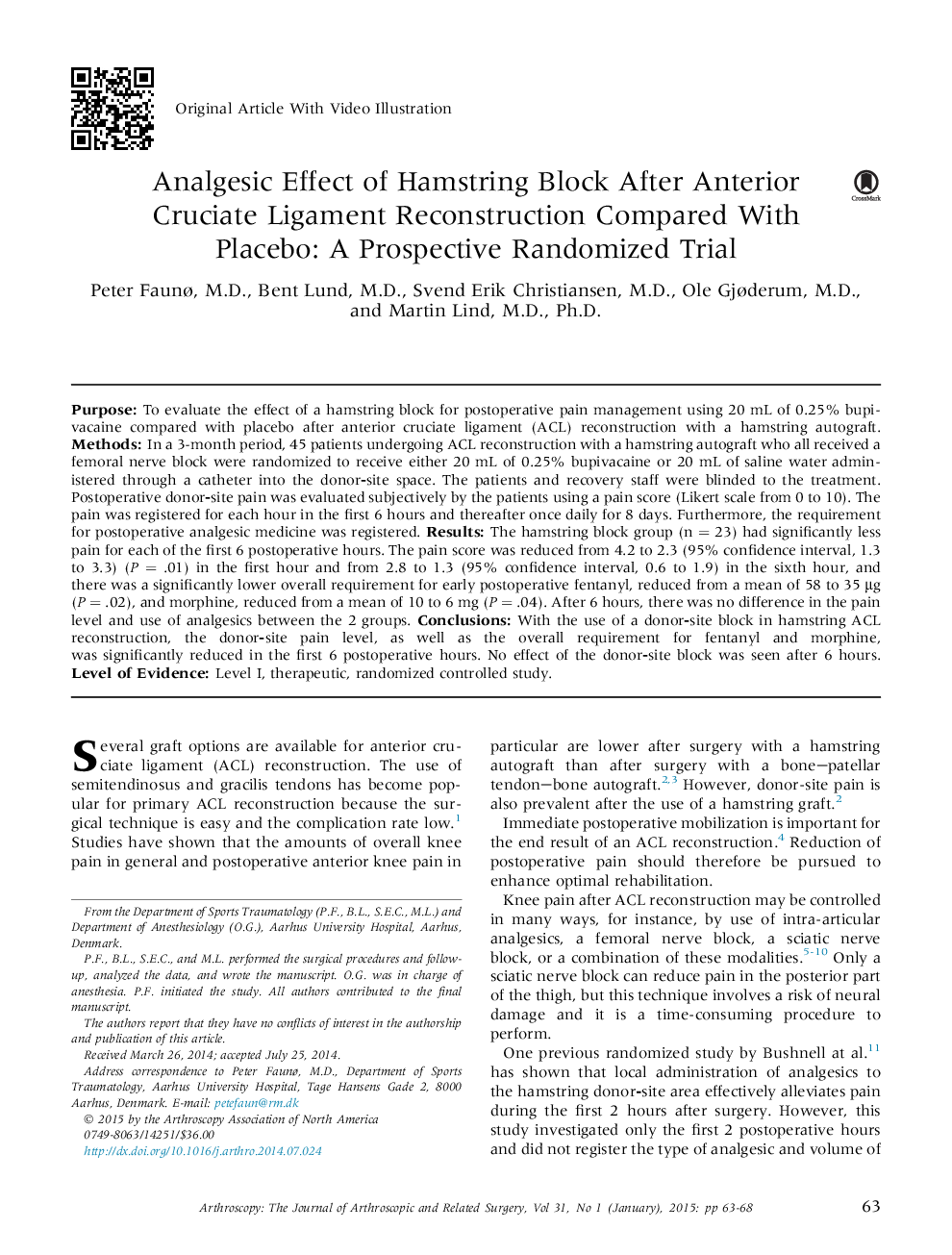| Article ID | Journal | Published Year | Pages | File Type |
|---|---|---|---|---|
| 4042726 | Arthroscopy: The Journal of Arthroscopic & Related Surgery | 2015 | 6 Pages |
PurposeTo evaluate the effect of a hamstring block for postoperative pain management using 20 mL of 0.25% bupivacaine compared with placebo after anterior cruciate ligament (ACL) reconstruction with a hamstring autograft.MethodsIn a 3-month period, 45 patients undergoing ACL reconstruction with a hamstring autograft who all received a femoral nerve block were randomized to receive either 20 mL of 0.25% bupivacaine or 20 mL of saline water administered through a catheter into the donor-site space. The patients and recovery staff were blinded to the treatment. Postoperative donor-site pain was evaluated subjectively by the patients using a pain score (Likert scale from 0 to 10). The pain was registered for each hour in the first 6 hours and thereafter once daily for 8 days. Furthermore, the requirement for postoperative analgesic medicine was registered.ResultsThe hamstring block group (n = 23) had significantly less pain for each of the first 6 postoperative hours. The pain score was reduced from 4.2 to 2.3 (95% confidence interval, 1.3 to 3.3) (P = .01) in the first hour and from 2.8 to 1.3 (95% confidence interval, 0.6 to 1.9) in the sixth hour, and there was a significantly lower overall requirement for early postoperative fentanyl, reduced from a mean of 58 to 35 μg (P = .02), and morphine, reduced from a mean of 10 to 6 mg (P = .04). After 6 hours, there was no difference in the pain level and use of analgesics between the 2 groups.ConclusionsWith the use of a donor-site block in hamstring ACL reconstruction, the donor-site pain level, as well as the overall requirement for fentanyl and morphine, was significantly reduced in the first 6 postoperative hours. No effect of the donor-site block was seen after 6 hours.Level of EvidenceLevel I, therapeutic, randomized controlled study.
